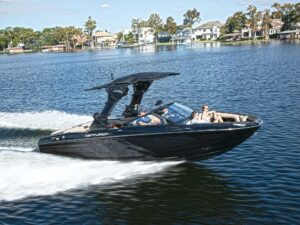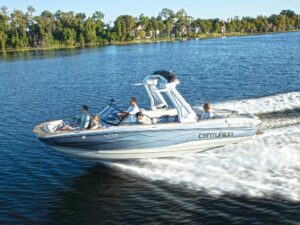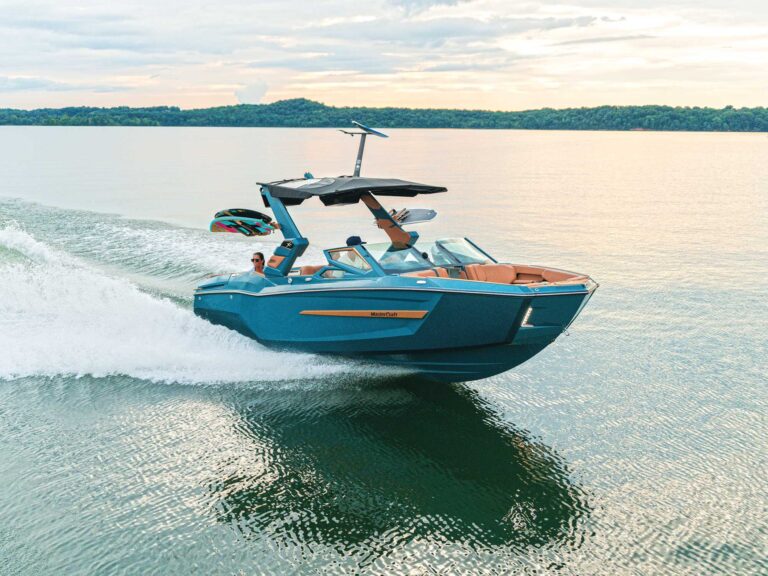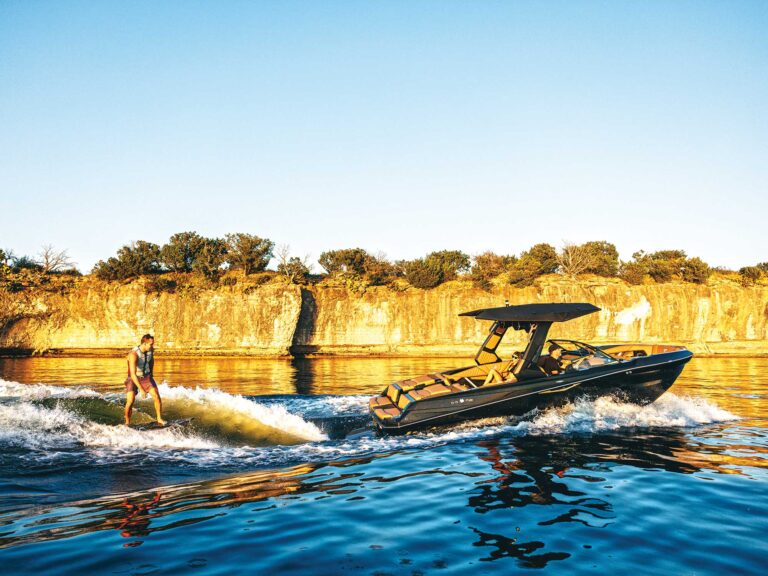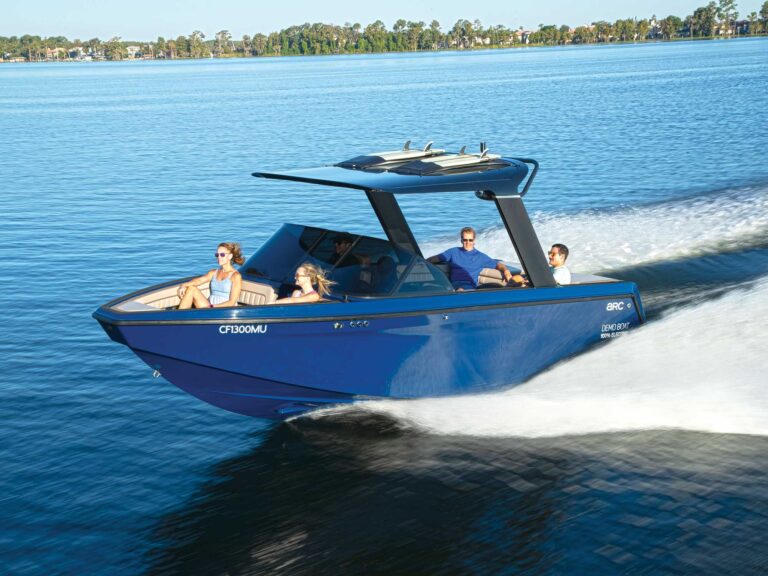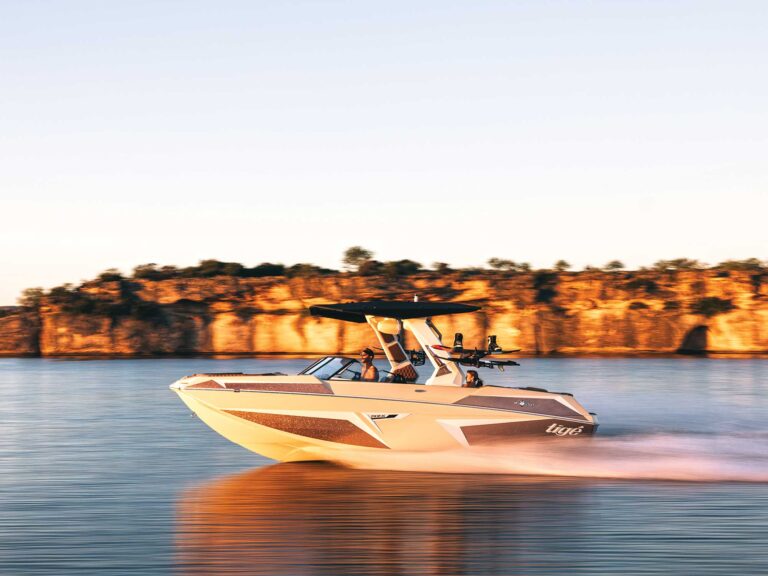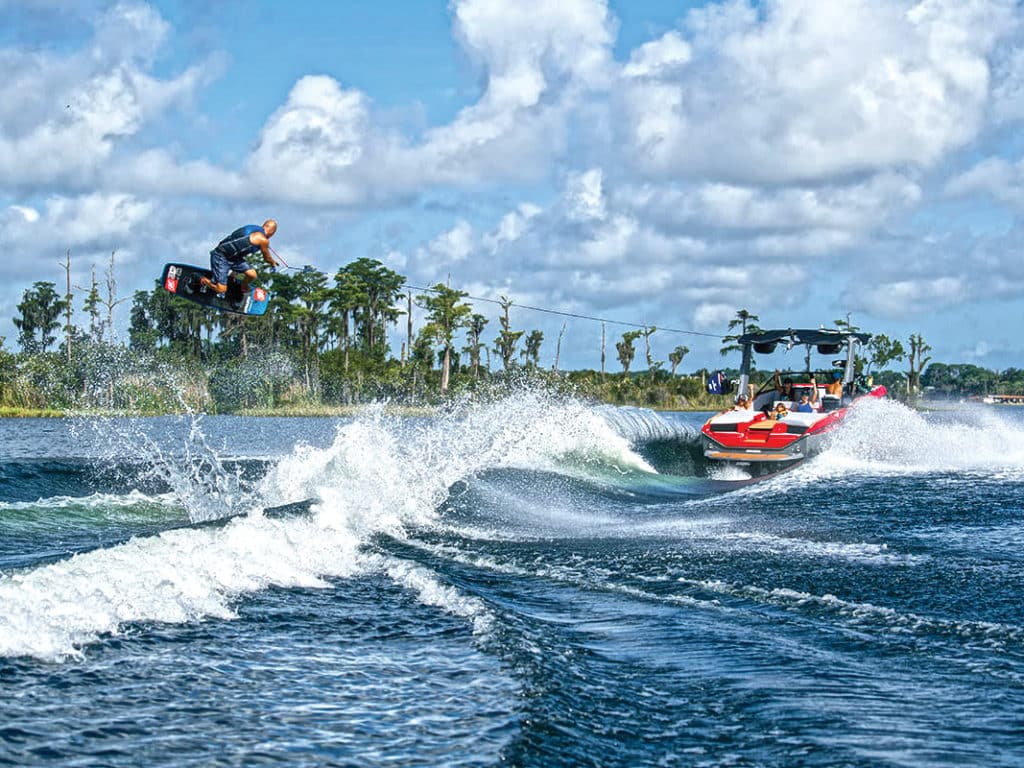
When it comes to wake sports, popular opinion is that wakesurfing is the low-risk, high-reward proposition. Wakeboarding? Many consider big risks and painful falls as the dues you have to pay. Not so, says wake legend and Team Nautique member Shaun Murray. “You don’t have to make crazy steps to have fun in wakeboarding. With a few small changes, it can be pretty rewarding.”
Here’s a few low-risk tips that pay off big, from getting up for the first time to progressing toward that first wake-to-wake jump.
Fly, Don’t Plow
“When learning to get up, people think you need to keep the topside edge of the board dry,” says Murray of the common wake starting position. “The mistake with that is the board acts like a plow, and you’re going to put about five times your body weight into the handle.” Instead, get up more efficiently and save your energy for riding by “flying” the board onto the surface like a wing.
As the driver puts the boat in gear and moves forward at a slow idle, relax and let the board compress into you, with arms straight, knees coming into the chest and your bottom going into the board. Once in this tightly packed position, let your upper body roll slightly forward so your hips come under your shoulders and the board assumes a flatter, shallower angle as it slips below the surface.
Don’t worry about the board being submerged. Murray says: “As long as your toes are slightly higher than your heels, the board will fly to the surface with little resistance once the boat accelerates.”
Read Next: Ten Ways to Keep Your Wakeboarding Fun
Slower Speeds, Shorter Lines
According to Murray, too many riders rush into those first jumps and struggle clearing the distance between the wakes, taking some painful falls in the process. To shorten the learning curve, start out at about 65 feet of line length and speeds as low as 12 to 14 mph. Stay at these settings while getting used to tricks like surface 180s and riding the board both regular and goofy. Next, move onto one-wake jumps with only a short approach (16 to 19 mph), looking to steadily increase your distance in the air. “The farther you can go with a short approach,” Murray explains, “the better off you’ll be when it comes time to go wake to wake.”
When that time comes, shorten the rope by taking as much as 25 feet off the standard 75-foot line-and-handle combo. A shorter towline puts the rider in a much narrower portion of the wake’s V, lessening the distance needed to travel in the air before setting down on the opposite wake. A shorter line also allows for slower speeds (about 18 mph), an ideal combination for riders looking to progress into tricks, like their first 180 or 360 spin.



